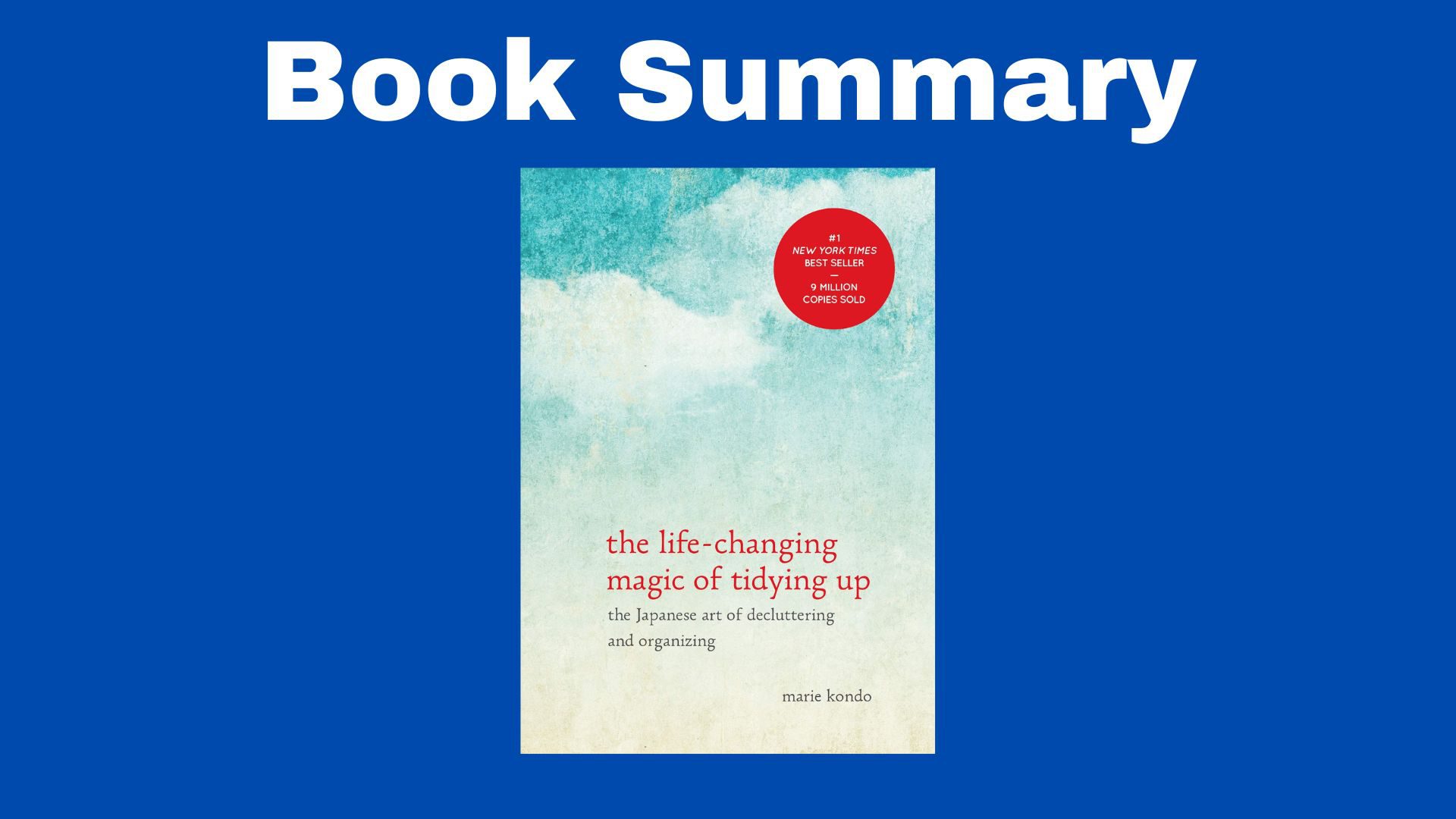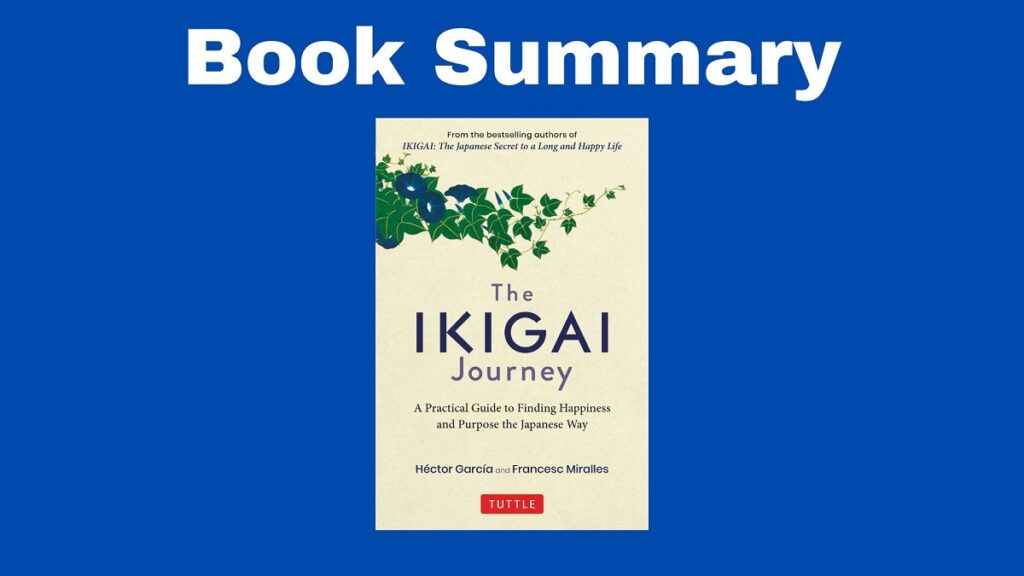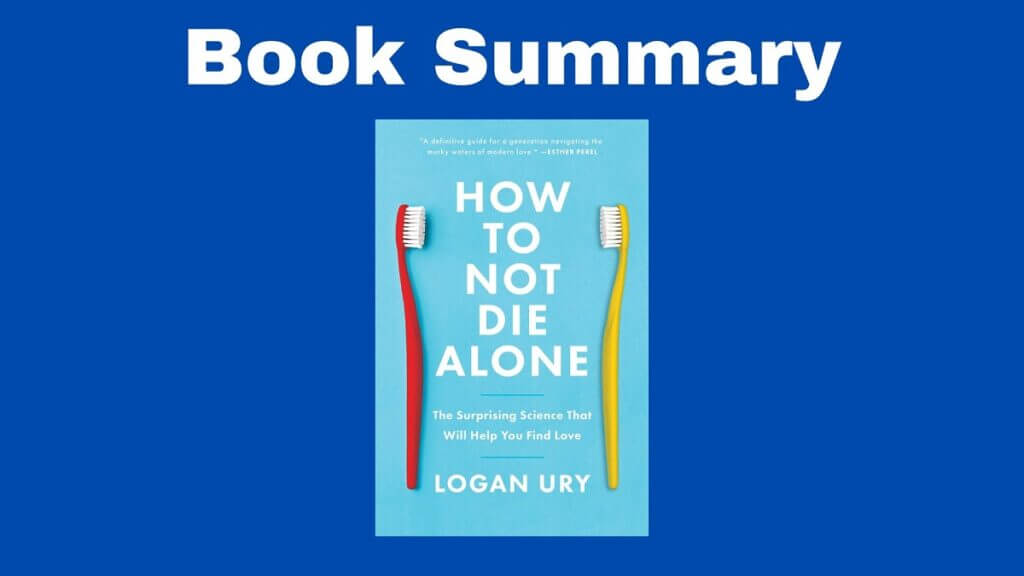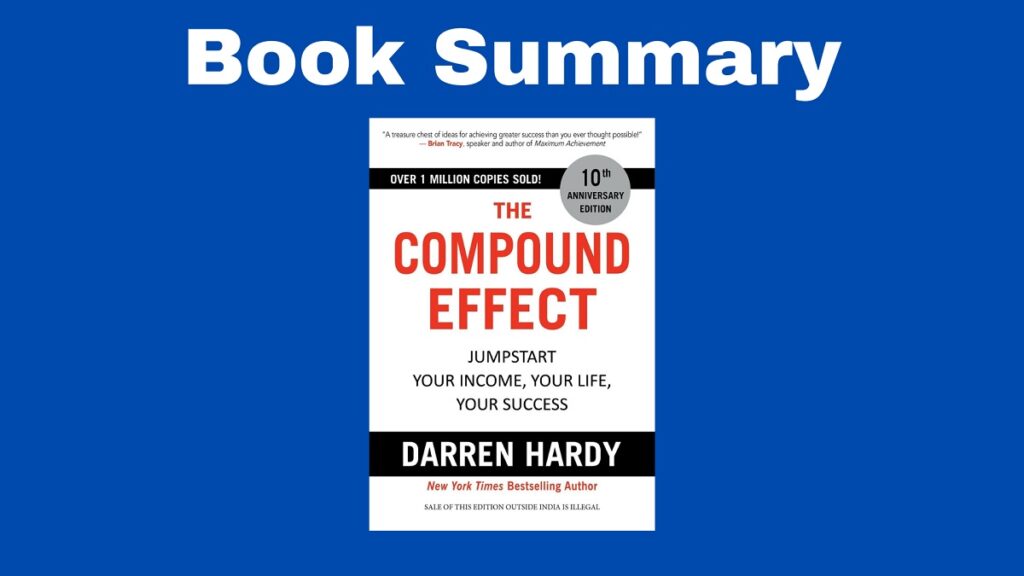The Book in Three Sentences
In this book summary of The Life-Changing Magic of Tidying Up, you’ll learn if your possessions spark joy or not. This simple filter will let you know what to keep and what to discard and the results can be extraordinary. This book promises that by cleaning, organizing, and simplifying your life, you’ll see immediate results that will last forever.
The Life-Changing Magic of Tidying Up Summary
Introduction
This book teaches you to organize your place so that your life will forever change. The secret to organizing is discarding first, and then putting everything in its place as thoroughly as possible. The author calls this the KonMari method and if you follow her advice, you’ll never go back to a cluttered place and you’ll only be surrounded by the things you love. It’s worth pointing out that organizing isn’t an external problem but an internal one. To a certain extent, order depends on your personal values.
Chapter 1: Why Can’t I Keep My House in Order
Unlike other habits, tidying isn’t passed down from generation to generation. Since we’re little, we’re expected to tidy, but we’re never taught how.
Sometimes, no matter how much we clean, the place soon becomes a mess again, but this happens because we do it in short sessions rather than a single, long one. Also, most people confuse storing things away which tidying. The solution to these problems is to tidy up in one go to see the results and change your mindset. By cleaning thoroughly in a short amount of time, you’ll see the benefits and this will encourage you to keep the place organized in the future.
The popular method of discarding one item at a time every day doesn’t work because it’s hard to take seriously over time and most people will lose enthusiasm. Instead, for each item, decide if you’re going to keep it or not, and if you do, decide where you’re going to put it.
A lot of people decide to clean up when they’re under a lot of pressure. This happens because something in your life isn’t quite right and you want to fix it. This gives you momentary relief, but the problem will persist over time. What causes a cluttered space isn’t just physical, but psychological as well. By organizing, you’ll be forced to confront your problems.
Storage is a synonym for hoarding. Storage represents the path of least resistance, but while the clutter is no longer visible, those things are still part of the problem you’re trying to solve. By storing things, you’re wasting time hiding them and creating the illusion that the problem’s been solved. Soon, you’ll need a more “creative” storage solution or a bigger one and before you know it, the problem will get out of control. To tidy, you first have to discard.
Instead of tidying by location, tidy by category. Common categories include clothes, books, electronics, and so on.
See tidying as a special event, not as a daily or regular task. You should only tidy once. To be clear, you can do daily tidying, but it only involves putting things back where they belong. Special event tidying is a once-in-a-lifetime occurrence where you remove the unessential things in your life.
Chapter 2: Finish Discarding First
To create the perfect environment free of clutter, you have to do it once instead of gradually. That said, the process might take up to six months which sounds like a lot, but you have to remember that you’ve been accumulating clutter your entire life. First, you have to discard, and then, you organize what you decided to keep.
Never forget the reason why you decided to organize in the first place since this will keep you motivated and will help you visualize an ideal lifestyle. Be specific with the mental image of the place you want to have. Then ask yourself why you want that lifestyle you thought of. Keep asking yourself why until you reach the real reason which is probably to be happy.
The standard you use to keep or get rid of something is if it brings you joy. So take each item and ask yourself if it sparks joy or not. You only keep those that do and discard the rest.
Remember to focus on one category at a time. If you organize a room first, by the time you move on to the next one, you’ll come across the same items you’ve already dealt with in the previous room. This is a waste of time and energy and you’ll soon lose motivation. Focusing on one category means taking all the items that are similar, such as clothes, and dumping them in one spot so that you can decide if you’re going to keep each item or not. To decide this, grab each item and determine if it sparks joy or not. The idea is to put them in the same location so that you see how many things you have. Also, by moving things around, you “wake them up” which makes it easier to decide if they spark joy or not.
Never start with the category that’s the hardest to deal with, such as special items or mementos that mean a lot to you. Apart from the physical value, function, information, and emotional attachment come into play when deciding to keep or discard something. So you should start with the easiest category first and gradually work your way to the hardest ones. This means starting with clothes, then books, papers, komono (miscellaneous items), and finally, mementos.
Don’t let your family members, especially parents, see the items you’re going to donate or throw out. It can be painful for them to see what their children get rid of and they’ll insist on keeping the things.
A disorganized place can put you in a bad mood and this can affect your family. Focus on organizing your room and your things and don’t criticize others or judge them. Discarding and organizing your things is contagious and this will encourage others to do it too. Additionally, cleaning on your own will make you tolerate everyone else’s untidiness.
When there’s something you don’t need, chances are your family won’t like it either. Don’t give the things you want to discard to other family members. They’ll end up with things they don’t like and they’ll probably accept what you’re offering but they’ll do it out of guilt.
The process of taking an item and seeing if it sparks joy or not is like having a dialogue with yourself. To tide, you have to create a quiet environment. Listening to music or TV is not recommended at all. You can, though, use music with no lyrics. The best time to start tidying is early in the morning because your mind is clear and you feel refreshed.
Sometimes, it’s difficult to throw something away. For those specific items, try to think about why you have them, when you acquired them and what role they play in your life. Use that information to learn valuable a lesson and let the items in question go by thanking them. Some of the things you’re clinging to have already fulfilled their purpose. To value the important things, you first have to get rid of the ones that no longer have a purpose.
Chapter 3: Tidying by Category Works Like Magic
The order in which you should tidy is the following: first, clothes, then books, papers and komono (miscellaneous items), and finally, sentimental items. This is the ideal way because you start with the easiest category and slowly move on to the hardest. Each category has subcategories. Divide clothes into tops, bottoms, clothes you hang, socks, underwear, bags, accessories, clothes for specific events, and shoes.
So you should start with clothing and the first step is to gather all the items on the floor.
Loungewear: outdated clothes or clothes that don’t suit you become loungewear. These usually don’t spark joy. Using something inside your house doesn’t mean that it has to be worn down or uncomfortable. You have to love the clothes you use, even if you’re using them inside your house. The clothes you use inside are still part of your self-image.
Clothing storage: once you’re done selecting the clothes you want to discard or keep, you have to store them. There are two main methods to store clothes: hang them or fold them. The author recommends folding them because it saves space and because by manipulating each item individually, you energize it and heal its soul
To fold your clothes, you must first visualize how they’ll look. The idea is to fit them in such a way that you can see all the items you have at a glance, so this means storing items standing up. Each piece of clothing must be made into a rectangle, and since each item folds differently and you have to figure out the most effective way to do it.
Arranging clothes: Once you’ve folded all the clothes that can be folded, you have to store them. You can hang any clothes that look better hung (coats, suits, jackets, shirts). Organize your closet, drawers, or space by category. In order to keep your space organized, arrange your clothes in such a way that they rise to the right. This involves hanging heavy items (these are heavy in terms of weight, but also dark in color) on the left side and light items (these are shorter, thinner, and lighter items) on the right. For example, you’d organize the following items in this order from left to right: coats, dresses, jackets, pants, shirts, and blouses.
Storing socks: treat your socks well. Never tie them or make them into a ball. Socks work hard during the day, so when they’re stored, they should be resting. A shoebox is the perfect storage solution for socks and stockings, it protects them, keeps them organized and unwrinkled, and you can see what you have.
Seasonal clothes: don’t store seasonal clothes in separate compartments. To avoid this, don’t overcategorize (this means not having a category for specific seasons or activities). To store clothes, favor drawers rather than other storage units.
Storing books: once you’re done with clothes, move on to books. First, you have to put all the books on the floor. Books become invisible when they are on shelves. In a way, they are hiding in plain sight which makes them one of the hardest items to deal with. If you have too many books, divide them into the following categories:
- General
- Practical
- Visual
- Magazines
Touch them one by one to decide if you want to keep them, but never start reading one while you organize.
A lot of people convince themselves that they are going to reread a book later so they keep it, but that’s hardly ever the case. Something similar happens with unread books. Remember that the sole purpose of a book is to read it. Once it’s served its main purpose, you no longer need it. Keep only the books that move you when you touch them. If you’re unmoved by an unread book, that means its purpose was to teach you that you didn’t want to read it. In the case of most books, if you give them away, recycle them, or donate them and you still want to read them, you can always buy another copy.
Keep the books that belong to your personal Hall of Fame, these are the ones you love and read often. Next, keep the books that inspire you. The books that give you moderate pleasure are hard to discuss because you might read them later on or not. Usually, the moment you encounter a book is the best time to read it and once that window closes, those books won’t be relevant to you anymore.
Sorting papers: for papers, discard everything unless it’s really important. A complicated filing system isn’t necessary. The only kind of papers you should save are the ones currently in use, the ones you need for some time, or the ones you have to keep. Letters and diaries are considered sentimental items, so save those for last. Once you decide which papers you’re going to keep, divide them once again, this time into papers to be saved and papers to be dealt with. All the papers must be kept in one spot.
Komono (miscellaneous items): storing things for the sheer purpose of accumulating them is hoarding. The Japanese refer to komono as miscellaneous items such as accessories, gadgets, parts, or tools. When things fall under this category, people tend to store them in drawers or boxes. The order in which you should organize komono is the following:
- CDs, DVDs
- Skincare products
- Makeup
- Accessories
- Valuables
- Electrical equipment and appliances
- Household equipment
- Household supplies
- Kitchen goods/food supplies
- Other
Sentimental items: never store mementos in your parent’s house. Once you send those boxes home, you’re never going to open them again. Also, while you might be attached to certain objects because precious moments come to mind when you see them, remember that you’ll always have those moments even if you discard the object in question. Regardless of what’s happening in your life, you live in the present, so don’t keep objects because they remind you of a better past. By taking care of sentimental items, you’re essentially processing the past. Otherwise, your past will be a burden you carry with you wherever you go and you won’t be able to enjoy the present.
Look at photos one by one and only keep the ones you love.
Some people have a tendency to stockpile, but no amount is never enough. If this is your case, remember that you can always go to a store and buy an item again. By reducing your stock, you make space, you organize, and you’re no longer burdened by it.
There’s no perfect amount of things to have, but if you ever wonder how many you should have, the solution is to reduce objects until it feels right. Of course, this is different for everyone. Some are minimalists, others love shoes, others collect books, and others are into clothes. By downsizing your possessions, you’ll learn what your values are.
If you find yourself attached to too many things you can’t bring yourself to get rid of, chances are you’re not taking good care of them and that they should go. Follow your intuition to see what you keep and what you let go of.
Chapter 4: Storing Things to Make Your Life Shine
Each thing in your house should have a home. When you arrive home, thank each item you’ve used throughout the day and put it in its designated place. By doing this, you keep your home organized in a more organic way.
As a general rule, discard first and store later. By doing this, you’ll end up with a place that has the exact number amount of belongings you need and that fit in the space you have.
When it comes to storage, keep it as simple as possible. There are two rules for the storage method you choose: store items of the same category in the same place and don’t keep storage space in different rooms. As a rule of thumb, take care of your things first and then move on to communal places.
Never keep things around because they are close at hand. Everything should have a home. Your heart should tell you what to keep and your house should tell you where to store it.
Never pile things on top of each other because this is a waste of space. Always stack everything vertically instead. If you stack, you can stack forever and it’s hard to take the times at the bottom so we tend to use them less frequently.
Avoid using commercial storage items. There’s no reason to get gadgets to organize your things. If you need anything, you can use a shoebox because it’s free and versatile. Other standard items you can use include small plastic cases, plastic food containers, or any square box. When you’re in the middle of organizing, postpone looking for storage items until the very end.
To store bags, use another bag. This advice applies to handbags, purses, or any kind of bad. They take less space and you know that the same type of bags are together when you need them. As a general rule, never store more than two in one bag.
Empty your purse, backpack, or messenger bag when you get home, even if that means taking out items you use on a daily basis, such as your wallet, bus pass, books, and other documents. This is to give your bag a break so that it can rest.
Items that you put on the floor belong in the closet. This includes suitcases, musical instruments, clothes, and appliances.
Your bath and kitchen sink should be clutter-free. Don’t use baskets or containers to store them because the bathroom is a humid place. Keep everything out of the bath or shower. Dry everything you use in the bath and then put it in the cupboard. The same happens in the kitchen sink. Put away the sponge, detergent, and cleaning supplies after using them. When you’re done using the sponge, squeeze it and hang it up to dry.
Turn the top shelf of a bookcase into a shrine. You can use this improvised altar and turn it into a sacred space that gives you energy.
Decorate your closet with posters and memorabilia. Don’t hide what you like, instead transform your closet into a private space where you can see your interests on a daily basis.
Never leave your clothes on their original package or with the tags on. They take up more space and you’ll soon forget that you have them. Also, don’t buy in bulk. According to Kondo, you can’t call something your own unless you remove it from its package.
Written information transmits “noise”. These can be words found in labels, packages, posters, and signs and they can make a room feel cluttered, even if there’s not a lot in it.
Appreciate your belongings by saying kind words to them. Treat your possessions as if they were alive. If you do, you’ll realize that they respond by lasting longer and by supporting you in your endeavors.
Chapter 5: The Magic of Tidying Dramatically Transforms Your Life
Most of your passions don’t change over time, but you can discover what they are by organizing your house. Once you find yourself in a place that only has things you love, you might realize what you truly love in life.
Getting rid of things is more important than adding new ones. Tidying changes your life. This is what the author calls “the magic of tidying”. Tidying affects your confidence in decision-making: you may not have confidence in yourself, but you may have confidence in your environment. If you lack self-confidence, you can get the support you need from the space, things, and people that surround you.
Discarding things is hard, but not doing it comes down to two reasons: being attached to the past and being afraid of the future. What you own represents how you want to live your life. Facing your possessions and discarding the ones you dislike can be painful because it forces us to confront our past decisions. But we can do one of three things: face our possessions now, face them in the future, or avoid them until we die. If we confront them now, we’ll be able to achieve more.
Discarding the things that don’t give you joy has no side effects whatsoever. To be clear, you might regret throwing something away (in fact, expect this to happen), but you can always get it back somehow and if you don’t, you’ll see that this is no tragedy. This shows that by discarding things, you have changed your mindset because you won’t have to search for long, and you’ll be forced to act. In the end, you can rest assured that things will be fine even if you don’t have something after tidying.
Show your house respect by wearing nice clothes when you’re tidying. This should be a special event where you celebrate the fact that a lot of things are leaving. Tidying is about creating a balance between people, possessions, and your house.
All your possessions want to be useful to you and they are unique. What you let go of will turn into energy and it’ll come back in some form. Make the departure of your possessions a ceremony so that they can embark on a new journey.
When we reduce our possessions, we detox our house and our bodies. Soon, you’ll feel lighter and you might lose weight or your appearance might change.
The purpose of tidying is to live in a natural state, so you might see that organizing can bring you good fortune. This is similar to the principles of Feng Shui, the discipline for improving good fortune by organizing your environment.
If you surround yourself with things that spark joy, you’ll be happy. If you can confidently say that you like something, ignore what everyone else says and keep it.
Organizing your house is the beginning of a new life. The fact that you’re reading this means that you want things to change, that you want to improve, and that you want to be happy. This is the first step to something bigger. If you tidy thoroughly, quickly, and in one session, you won’t have to tidy ever again. Once you do it, you can dedicate your time to your mission in life.
Further Reading
If you enjoyed this book summary of The Life-Changing Magic of Tidying Up, you might also like:




